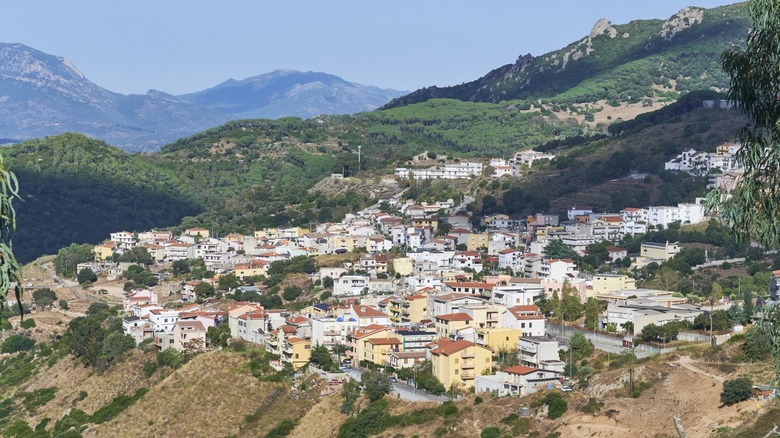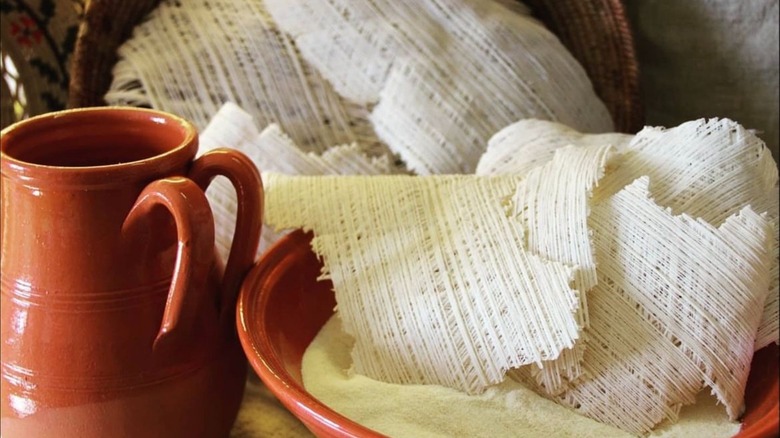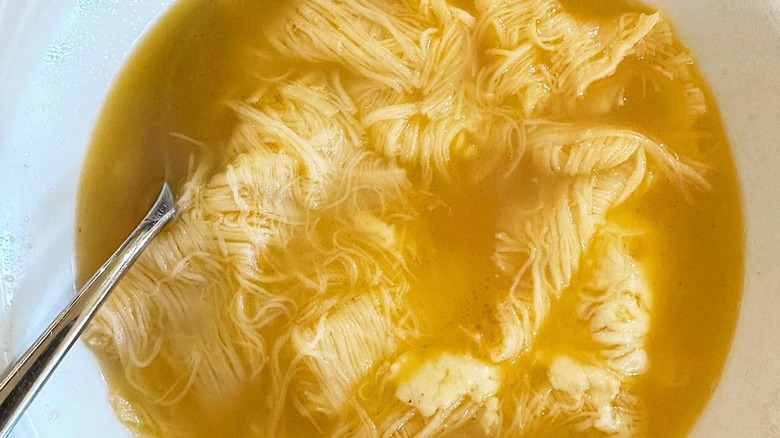The World's Rarest Pasta Is Eaten Only Twice A Year
Italy is a country that is simply chock full of history and tradition related to food culture. From having strict, controlled denominations of wine known as DOC, to culturally enforced norms surrounding the right and wrong time to drink a cappuccino, it's safe to say that Italian cuisine is an area of life taken very seriously by the locals. While this sense of rich traditional practice has extended beyond Italy, such as in the case of Sardinia's traditional dessert dumplings, some local practices have stayed firmly entrenched within the Italian countryside and have developed somewhat of a cult following.
This is exactly the case with a pasta called su filindeu, the rarest pasta in the world. Meaning "threads of God" in Sardo, a small language that's actually quite similar to Latin, this pasta is made by only a scant few women in the Sardinian city of Nuoro. This pasta, rare as it is, is steeped in history. Su filindeu continues to be the focal point of a biannual regional festival, attracting people who make a 20-mile pilgrimage overnight to share the delights of this dish.
A dish rich in tradition
Su filindeu has a history in the region that dates back about 300 years. Traditionally, it was only made by the women of one single family, which (until recently) meant the secrets to this dish rested in the hands of only three people. This trio of artisans is comprised of Paola Abraini who, in her 60s, continues to make su filindeu by hand every day; as well as her niece and sister-in-law, all of whom still live in Nuoro. The recipe itself is simple enough — semolina wheat, water, and salt — but the technique requires a near-savant level of expertise. The pasta is rolled out and subsequently stretched and folded back onto itself until there are 256 fine strands of pasta, each one about half as wide as angel hair. The strands are then stretched onto a circular board in a criss-cross formation and left to dry, creating a mesmerizing weave that can be broken off and cooked.
There isn't a single known source for why the Abraini family has been the sole inheritor of this technique, but this close guarding has made su filindeu something of a phenomenon associated with the biannual Feast of San Francesco, which happens over nine days in May and three in October. Hikers descend on the Italian village of Lula (a 20-mile hike from Nuoro) to be rewarded with this ultra-fine pasta served in a delicious mutton broth with pecorino cheese. It's a dish that's worth the time and effort.
A delicacy at risk of extinction
Pasta company Barilla supposedly attempted to create a machine that could craft su filindeu, but to no avail. Even celebrity chef Jamie Oliver once tried to recreate the renowned dish alongside Paola Abraini, but couldn't, due to the sheer delicateness of stretching the dough so finely. Unfortunately, however, the pure difficulty of the technique, as well as the fact that only three people know how to properly make it, has made su filindeu a dish at great risk of extinction. According to the Slow Food Foundation for Biodiversity, which has an Ark of Taste initiative that brings attention to endangered dishes around the world, su filindeu is at risk of being lost to time. But although this dish teeters on the edge of extinction, there's hope for its preservation.
Abraini has broken the age-old tradition of passing down the recipe for su filindeu through only her family, and she has begun extending her practice to include other women living in the area (per the Slow Food Foundation). Hopefully, with more people taking up the mantle of expert su filindeu artisans, this dish will survive its endangerment and cement itself further into the culture of Nuoro. Su filindeu is a dish, just like traditional Italian cakes, that you have to try at least once. The only thing standing in your way is a simple 20-mile excursion.


